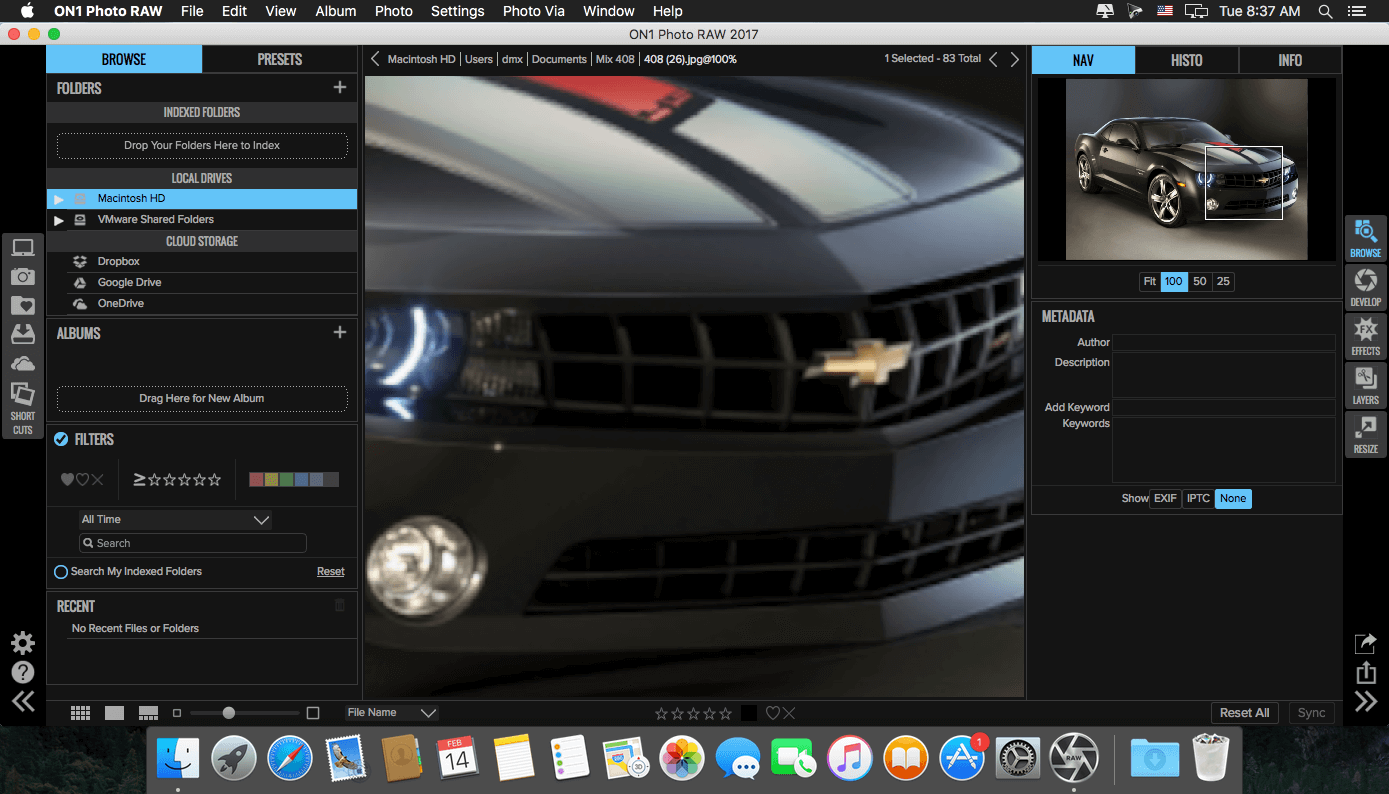

In my opinion ‘Basic’ is about the worst name for this section I can imagine, but at the same time I can’t think of a better one. Hovered over the mid-tones ‘Exposure’ section of the histogram. In fact, experimenting by left-clicking in one of the sections of the Histogram and dragging left or right is an excellent way of visually seeing what each slider does to the histogram – and your image. If you’re thinking about now that you might be able to control the sliders in the Basic panel of Lightroom from here, you are correct. You’ll also notice that your mouse icon will change to a bi-directional arrow.

Hovering your mouse over the histogram will highlight each section and show the caption on the left and a number off to the right. Lightroom divides the Histogram into 5 sections – from left to right: Blacks, Shadows, Exposure (ie mid-tones), Highlights and Whites. Think of it as the lie detector and roadmap all rolled into one for navigating the rest of Lightroom’s develop module. Either way, the truth is, the histogram is the only visual that will not lie to you.

We all know it, and depending on who you are, you either have embraced it or continue to avoid it. There’s a reason it’s at the very top of the Lightroom Basic panel. This is especially important regarding the White Balance of your image as it can have significant impact on color and exposure clipping. I intend to cover this in more detail in a future ‘Controlling Color’ article, but I will include some tips along the way here so you’re not left hanging too much. Modifications to light will affect the color. But before we begin you need to understand that you can not completely divorce color from luminosity in Lightroom editing. This article is going to focus primarily on Light, that is luminosity of the image.
#Tone curve on1 photo raw 2018 how to#
Knowing how to utilize the tools allows you to make the most of your desired workflow. Additionally there are considerations on if the Lightroom RAW adjustments are intended to be then taken into Photoshop, or if you plan for a purely Lightroom only edit. And each of my photos requires a slightly different touch to achieve the look I personally want. The reason for this is simple – your photos are not my photos. In this article I will be focusing on explaining the global adjustment tools and what they do more so than how I personally use them. Add in a slight misjudgment of exposure settings that need to be corrected, or simply artistic style decisions that you wish to make, being able to successfully edit your RAW files in Lightroom for light correction is the first step in creating a finished image you are proud of. The human eye can see at least twice the dynamic range as your camera’s sensor, even the best cameras out there no where near the human eye in this regard. So it’s no wonder that when it comes to editing, I first start with the light.


 0 kommentar(er)
0 kommentar(er)
